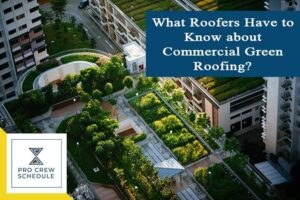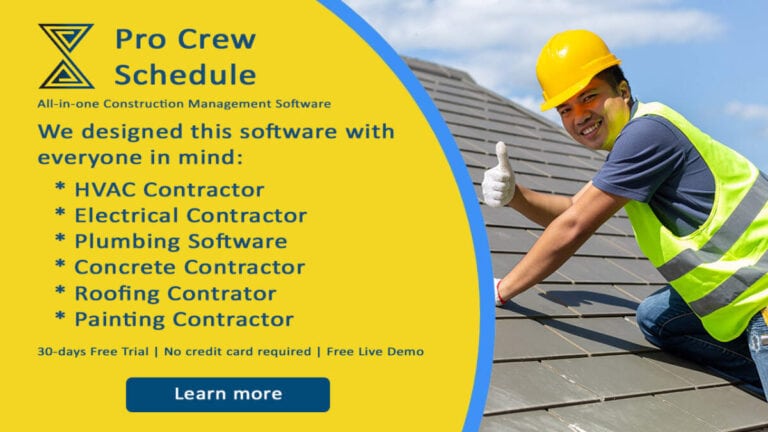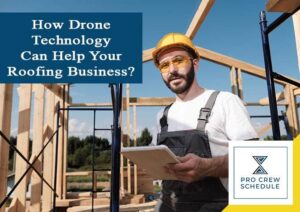The increasing number of commercial buildings and urban population growth have a tremendous impact on human health and the environment. People across all industries have shown concern as they become aware of the tremendous impact these issues have on the environment. In fact, roofing experts started looking for solutions to become more eco-friendly in their roofing services without affecting the continuous improvement of urban life.
This is where the concept of Green Roofing is born. Read more of this blog to discover how green roofing can be beneficial to your customers, including the key factors needed in implementing green roofs on commercial buildings.
What exactly is Green Roofing?
Although the concept of a green roof isn’t new, it is still something that has been going through many changes over the years. It is the act of utilizing vegetation on the top of the building to protect the belongings and occupants inside. Green roofs for commercial buildings mainly support plant life. These roofs and their designs are multi-layered and complex systems that can yield your client’s building numerous benefits.
There are four major types of green roofs that can be utilized for commercial buildings and each has its own unique qualities.
- Intensive Green Roofs – this type of green roof can add numerous plants and soil, which adds heavy amounts of weight at the top of the building). You can offer your clients a wide range of plant options upon choosing this green roof. Thus, it only means your clients can add shrubs, perennials, and grasses to their rooftop.
Moreover, almost anything your client wanted to plant and grow in the roof can be grown in the intensive green roof. But the only restrictions are tall plants because these plants need significant soil room and have aggressive roof patterns.
- Extensive Green Roofs – this type of green roof is a low-maintenance, lightweight roof that doesn’t require tons of water. In fact, the plants that are part of this green roof include herbs, moss, and low-growing succulents. This option comes with a lesser cost in terms of green commercial building roofs because it never requires tons of soil. On top of that, only a few varieties of plans are being used.
- Brown Roofs – this roof is a perfect example of a community benefit from a commercial green roof. This type of living roof is purposely designed to solve a particular ecosystem problem and support biodiversity. For instance, brown roofs might be used to provide food or habitat for local endangered species.
- Semi-extensive – semi-extensive roofs are quite more shallow compare to intensive roofs. These roofs are between six and ten inches, allowing them to support selected grasses and brushes. Semi-extensive is more versatile as you can install them on low-slope or flat roofs. Additionally, this roof isn’t designed to be regularly walked on.
What Matters Most in Green Commercial Building Roofs?
Ever since green roofing is offered, it has already proven to provide several ground-breaking benefits in commercial buildings. As a roofing professional, you need to seriously offer green roof gardens to your clients as part of your roofing service. First, consider the factors below for each matter in building commercial green roofs.
1. Having a Commercial Roof that can Handle Going Green
In addition to choosing the right plants for the commercial green roofs, ensure that the roof has the proper slope and can handle the extra weight. Some other factors that have to consider include environmental conditions like how much wind and sun the roof is exposed to, whether or not there’s an electrical system on the roof, and if the area can be easily accessed for maintenance.
Getting through things, checking, and updating as you work as a roofer will be easier when you invest in the right tool. There are tons of software applications today aiming to help trade professionals in managing business and projects. Make sure to choose a software tool that is designed for project management for construction. This software application is a comprehensive tool that you can use anytime and anywhere!
2. Types of Plants for Green Roofs
The roof for commercial buildings faces many forms of weather extremes. In most cases, your client often has their preferences in terms of choosing plants. Both you and your client can decide what type of plants to be placed on the green roofs. Make sure to select the plants that can strongly withstand low amounts of moisture and high heat.
Choosing the right plants is imperative, especially if your client wanted to get the most of his green commercial roof. Below are some of the best plants and vegetation to consider placing on the green roof.
- Native plants
- Productive plants
- Landscaping plants
3. Green roof planning considerations
Installing a green roof isn’t difficult to do, but installing and planning can be. That is why you have to be a dedicated roofing professional and invest in advanced roofing technologies like subcontractor scheduling software to get right through it. Detailed planning starts with a thorough inspection. Check first if your client’s roof has the proper drainage pitch or other attributes like live load-bearing capacity. Load bearing refers to the capacity of the roof to support the added snow and ice during the winter season and the weight of the saturated growing medium.
You are ready to install if there are no issues in such areas. Consider also enough space required for green roof maintenance and the maintenance of other roof components. Plan the green spaces accordingly because damage may be incurred and it can take years to regenerate.
Applications Systems for Green Roofs in Commercial Buildings
A green roofing expert like you has to plan how a green roof will be installed into your client’s building, including the materials you’ll have to use. Speaking of materials and your supplies, everything is trackable using the right construction inventory software. Experience a more intuitive way of monitoring and tracking your inventory using this software together with your roofing team.
Let’s head on now to some of the standard application systems for green roofing.
1. Vegetated Matts
For this installation method, plants are usually grown right in the substrate on the ground. When they’re mature enough for the transplant, the substrate and plants are cut into matts. Next, they will be laid on top of the roof.
2. Pre-vegetated trays
Certain substrates are usually made of tiny grains that cannot be rolled up into matt form. The substrates are often placed into plastic trays while the vegetation is planted into them. When these plants are already mature enough, the trays are immediately installed onto the roof. Roofing professionals have to be wise in picking their suppliers and manufacturers. It’s more beneficial to negotiate with a manufacturer who offers trays and provides fasteners.
3. Plug installation
You might also install the plants and substrate of the green roof separately. Right after the substrate is being raked out into the roofs, you can now place vegetation as you will in the background garden. Stand-alone plants that are semi-mature or mature and intended for living proofs are often called plugs. If you are installing mosses or sedum, then you might use cuttings instead.
4. Naturalized green roofs
Sometimes, green roofs are being left with bare substrate materials. As a result, the natural plants within the area will colonize it. It doesn’t take very long, but you will most likely get weed species if you use a green roof to colonize it. Naturalized green roofs are an excellent option, especially for your clients who wish to grow native plants and prefer to plant seeds instead of waiting for nature to fill the roof.
New York City Authorizes a Bill Requiring Green Roofs on New Commercial Buildings
New York City, similar to other metropolises of several millions of people, has excellent environmental advantages but serious ecological impacts. Today, NYC is slowly changing and evolving and is now trading its original glass-dominated skyline entirely with solar panels, wind turbines and plants! The NYC Council passed a historic act mandating the city to turn green, literally. Commercial buildings are the center and forefront of this “New Green Deal” in NYC, with green roofs taking the spotlight.
Following the footsteps of San Francisco, Denver, Portland and Toronto, all new commercial and even residential buildings in the city should top roofs with either solar panels, mini wind turbines and plants – or a combination of all three.
Changing the materials on the roof might seem like a little step. However, the impact of these changes can be awe-inspiring. Vegetated green roofs have proven to reduce the urban heat island effect since the plants absorb light that can otherwise become heat energy. Green roofs help reduce energy use inside buildings and minimize demand on power plants by moderating heat gain.
Research issued by the National Council of Canada has found that an extensive green roof can cut any building’s daily energy demand for air conditioning by almost seventy-five percent. In addition to this, green roofs look lovely!
How Can Construction Scheduling Software Help You?
Every industry is entirely different. However, the roofing industry is mainly a hard laboring field that usually requires extra helping hands for your crews to work effectively. Extra help doesn’t need to be additional manpower but instead in software solutions and other technologies. There’s an advanced software tool designed for project management purposes, and its advantages are boundless! It’s easier for you to adopt a systematic approach and manage everyday responsibilities.
Here’s what this specialized software tool can offer you:
- File sharing and protection
- Time-tracking and monitoring
- Effortless project scheduling
- Real-time collaboration
- Internal and external communication
- Balanced resource management
- Effective inventory management in construction
- Easy to explore and user-friendly
- Cloud-based storage
Start your FREE trial and experience this software tool for 30 days!







